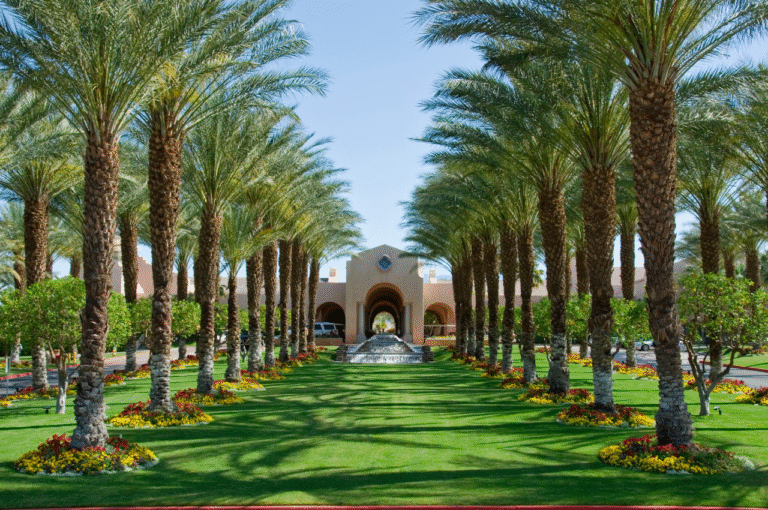Tenerife Holiday Guide
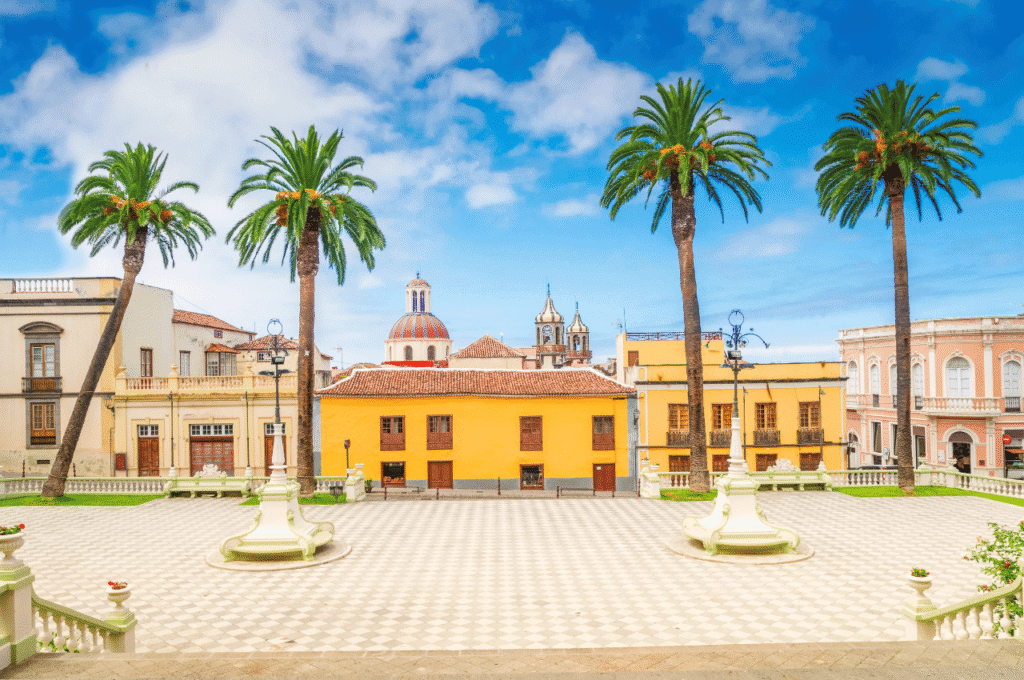
Looking for the ultimate Tenerife holiday guide to help you plan your next island escape? You’re in the right place.
Dreaming of sun-soaked days, volcanic beaches and a slice of year-round summer? Welcome to Tenerife — the crown jewel of the Canary Islands and one of Europe’s most diverse and exciting destinations. Whether you’re planning a romantic escape, a luxurious retreat, or a laid-back holiday on a budget, this island has something for every kind of traveller.
In this Tenerife holiday guide, I’ll walk you through everything you need to know to plan the perfect trip: when to go, where to stay, how to get around, what to see, and how to make the most of your time on the island — whether you’re here for five days or two weeks. By the end, you’ll know exactly where to drop your suitcase and dive into the best of Tenerife.
Let’s plan your unforgettable Tenerife holiday!
Things to do in Tenerife
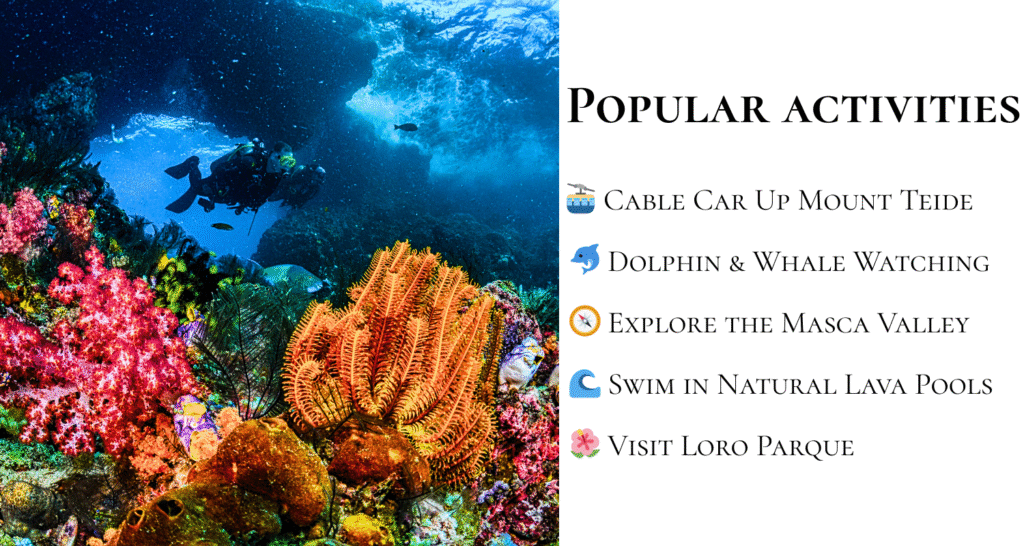
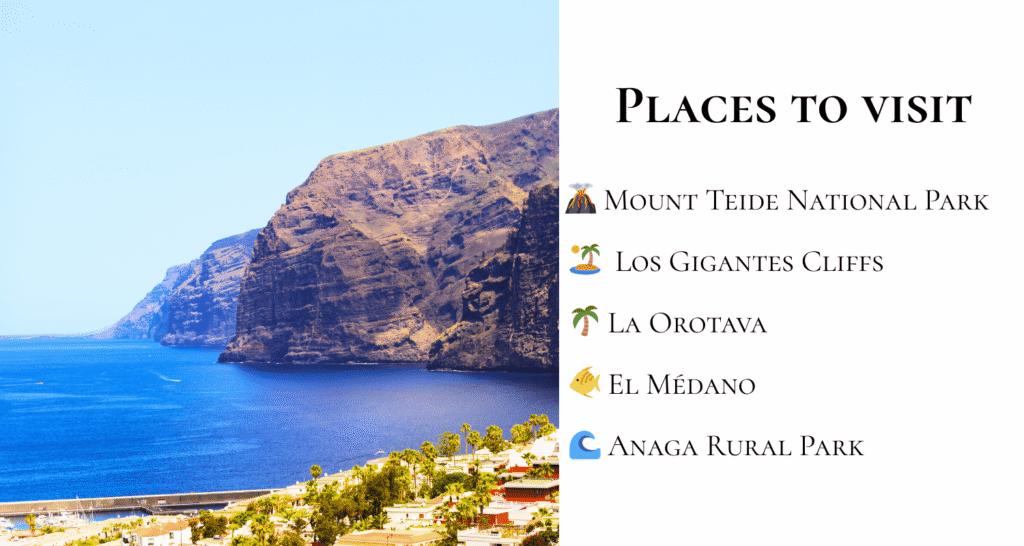
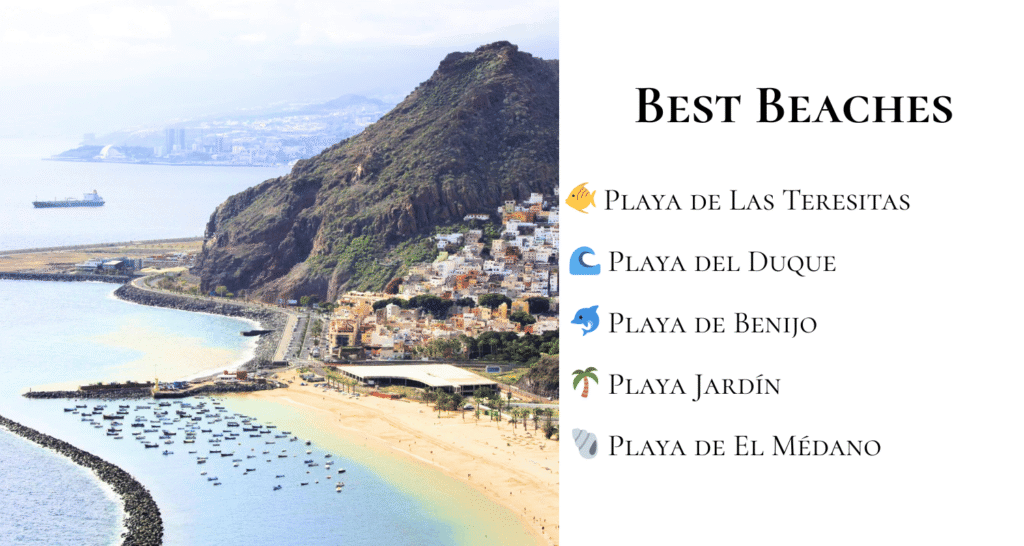
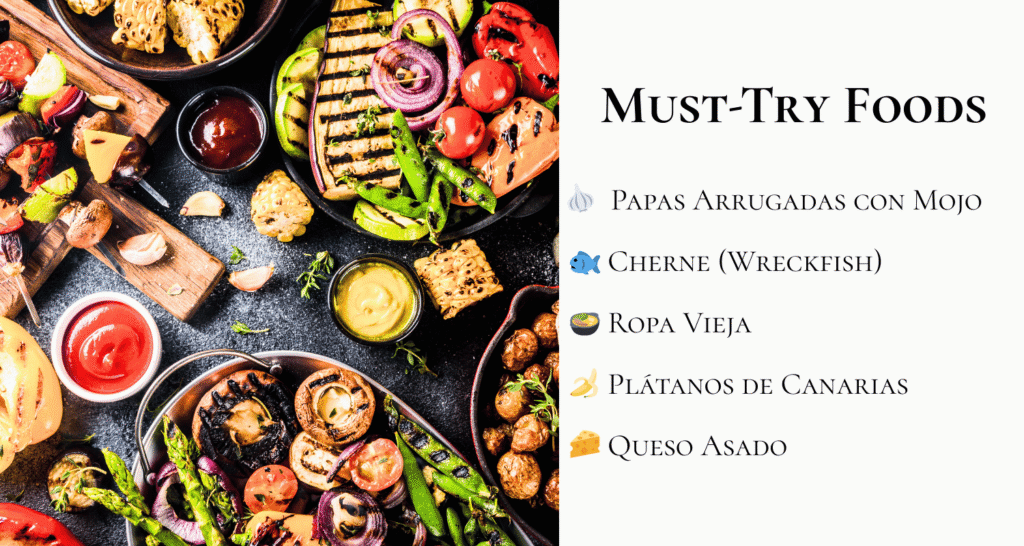

The Ultimate Bucket List 2025
The Ultimate Bucket List 2025

The Ultimate Bucket List 2025
The Ultimate Bucket List 2025
Best time to visit Tenerife
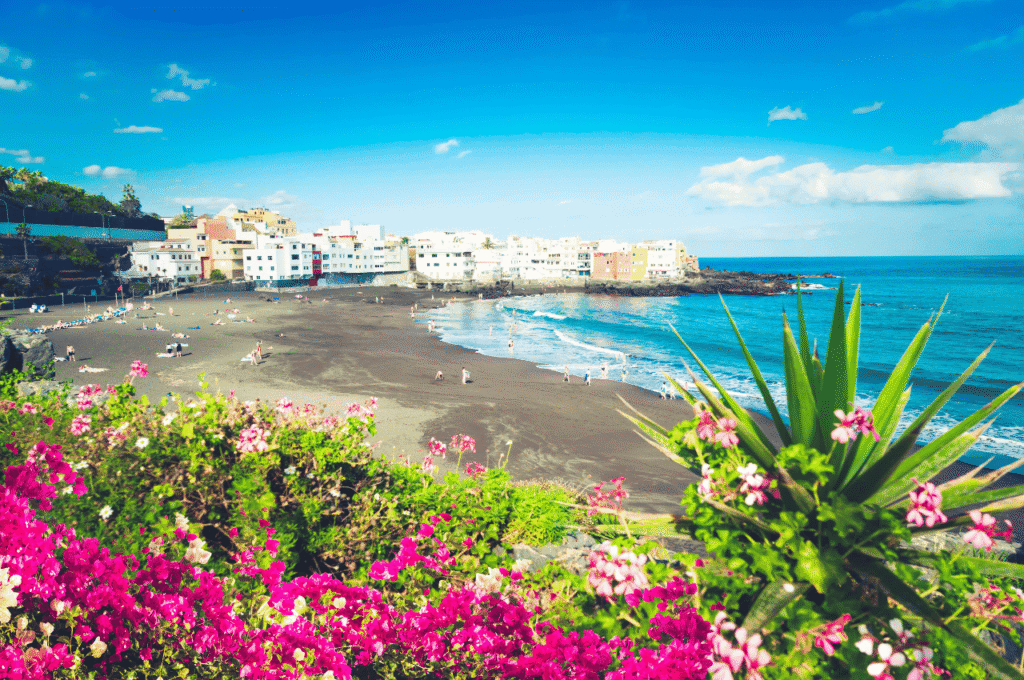
🌸 Spring (March–May)
Spring in Tenerife is an absolute dream. Days start warming up (think 22–26°C), wildflowers bloom and the island feels extra fresh after the mild winter. It’s also one of the cheapest times to visit Tenerife, especially in May, right before the summer crowds roll in.
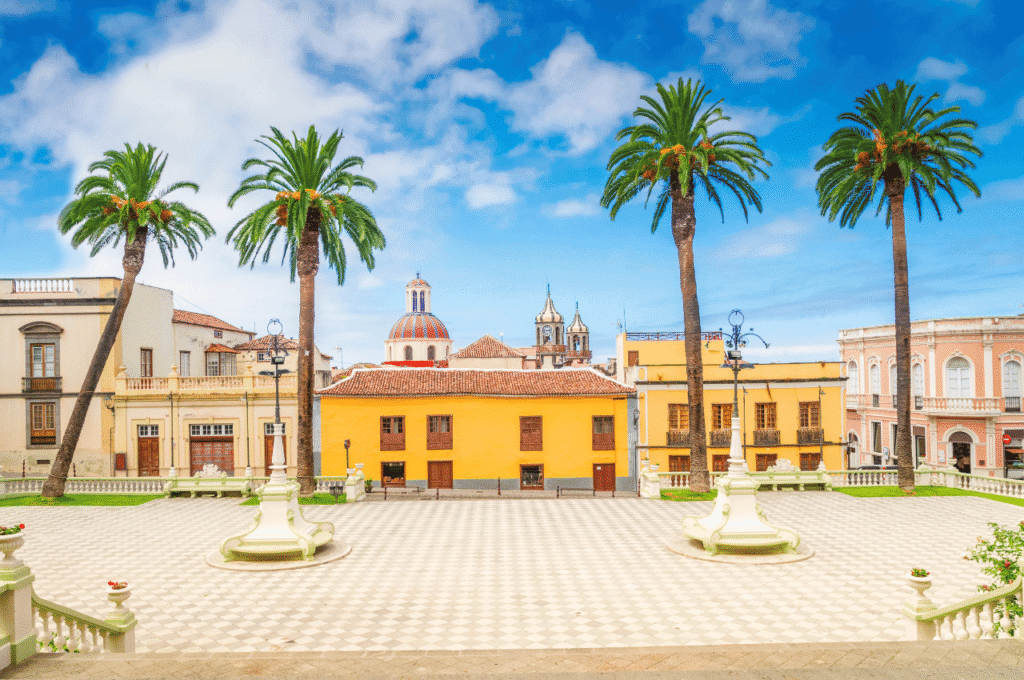
☀️ Summer (June–August)
If you’re all about beach days and buzzy nightlife, summer’s your season. Expect temps to hit 28–30°C, especially in the south where it’s drier and sunnier. Just know that August is the busiest month in Tenerife, so prices go up and popular spots get a little crowded. Book early if you’re heading here during this time.
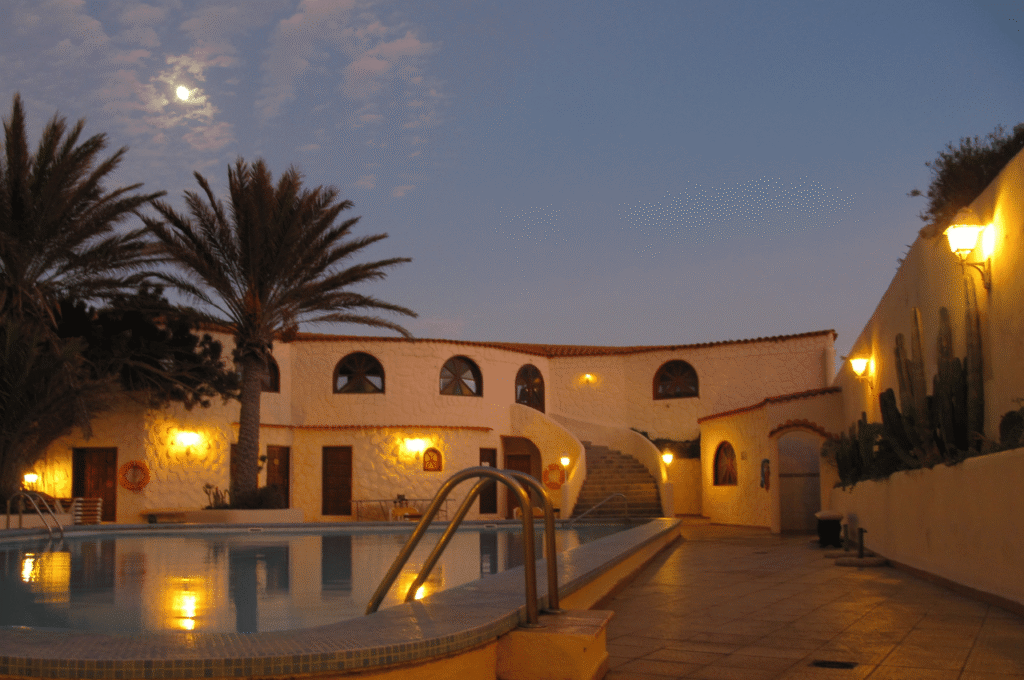
🍂 Autumn (September–November)
This is what I call Tenerife’s secret sweet spot. The weather is still hot enough to swim and sunbathe, but with way fewer tourists and better deals on hotels. September and October? Chef’s kiss. And if you’re chasing those budget vibes, November is another cheaper month to travel, especially for couples or solo travelers looking for a peaceful escape.
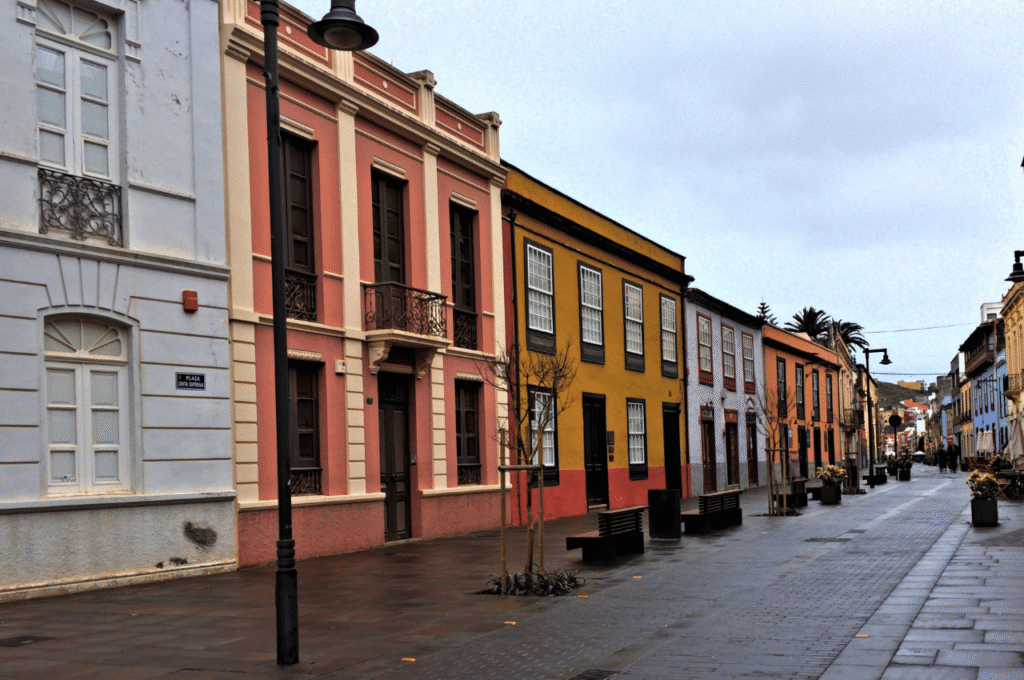
❄️ Winter (December–February)
While most of Europe is freezing, Tenerife stays mild and sunny — around 20–24°C by day. It’s peak season for travelers looking for a winter escape, especially in December when families and holidaymakers flood in. The good news? The island handles crowds well, and the festive vibe adds a magical touch to your Tenerife travel.
Where to stay in Tenerife
Tenerife Holiday Guide
FAQ
1. North vs South Tenerife
One of the most common questions when planning your Tenerife holiday is: should I stay in the north or the south of the island? The good news? Both have their perks – it really depends on the kind of vibe you’re after. So let’s break it down.
🧭 Exploring the South
If you’re picturing lazy beach days, resort pools and a cocktail at sunset – the south of Tenerife is calling your name. This part of the island gets more sunshine year-round, making it a favorite for those chasing the heat.
The south is home to most of the island’s luxury resorts, lively nightlife, and long stretches of sandy beach. You’ll find international restaurants, tons of water activities, and that classic holiday feeling everywhere you go.
Popular areas in the South:
Costa Adeje – upscale, family-friendly, and perfect for luxury stays
Playa de las Américas – buzzing with bars, nightlife, and energy
🌿 Discovering the North
Looking for a more authentic, low-key vibe? The north of Tenerife is lush, green, and full of local charm. It’s where you’ll find banana plantations, misty mountain views, and colorful colonial towns.
The weather here is a bit cooler and cloudier — but in exchange, you get a more cultural, laid-back atmosphere and fewer crowds. The north is a favorite in any Tenerife travel guide for travelers who like to explore off the beaten path.
Popular areas in the North:
Puerto de la Cruz – charming coastal town with beautiful botanical gardens
San Cristóbal de La Laguna – a UNESCO World Heritage gem with incredible architecture
📍Tenerife itinerary tip: Can’t decide? Do both! Many travelers split their time between north and south for a taste of everything. It’s a small island — you can drive across in under two hours.
2. Best Beaches to Visit in Tenerife
Tenerife is known for its stunning beaches, ranging from golden sands to black volcanic shores. Whether you’re after the ultimate luxury spot to unwind or a more secluded, adventurous beach for activities, the island has something to suit every type of traveler. Let’s dive into some of the top beaches in Tenerife that you simply can’t miss!
🌊 Playa del Duque:
Nestled in the sunny south, Playa del Duque is the beach if you’re looking for a touch of luxury. It’s known for its soft golden sand, calm turquoise waters, and high-end beach clubs lining the shore. This beach is part of the Costa Adeje area, home to some of Tenerife’s most exclusive resorts and restaurants. Whether you’re lounging under an umbrella or enjoying a cocktail by the water, Playa del Duque is the ultimate luxury Tenerife holiday experience.
🌟 Playa de las Teresitas:
For a family-friendly beach with a twist, head to Playa de las Teresitas in the north. This beach stands out with its imported golden sand (yes, it’s man-made!) and the stunning backdrop of the Anaga mountains. It’s perfect for families with its gentle waves, great facilities, and plenty of space to spread out and relax. Playa de las Teresitas is also one of the most picturesque beaches in Tenerife, so be sure to bring your camera!
🏄♂️ Playa El Médano:
If you’re a fan of water sports or simply love watching adrenaline-fueled action, Playa El Médano is the place to be. Known as the kitesurfing capital of Tenerife, this beach attracts athletes from all over the world for its perfect wind conditions and laid-back vibe. Even if you’re not into kitesurfing, the beach itself is beautiful and the nearby cafes make it a great spot for a chilled afternoon by the sea.
3. Getting to Tenerife: Best airports & transfers
The first step to planning your Tenerife holiday is figuring out how to get there. Tenerife has two main airports: Tenerife South (TFS) and Tenerife North (TFN). Which one is the best for you depends on where you’re staying and what type of flights you can find.
🛫 Tenerife South (TFS) – Best for international flights
If you’re heading to the south of Tenerife where most of the popular beach resorts and luxury hotels are located, you’ll likely land at Tenerife South Airport (TFS). It’s the busiest airport on the island, with a wide range of international and domestic flights coming in. From here, it’s an easy transfer to the buzzing areas of Costa Adeje, Playa de las Américas, and other resorts in the south.
🌄 Tenerife North (TFN) – Best for Northern Tenerife
On the other hand, if your Tenerife itinerary involves exploring the north — with its lush landscapes, charming towns, and quieter vibe — you might find yourself landing at Tenerife North Airport (TFN). It’s smaller and more local, but it’s a great option if you’re heading to places like Puerto de la Cruz or La Laguna. Flights to TFN are often more limited but it can be a more convenient option if you’re staying in the northern regions.
🚖 Airport transfers: renting a car or shuttle
Once you arrive at either airport, you have several options to get around Tenerife. If you’re comfortable with driving, renting a car is often the best option — especially if you’re planning to explore both the north and south of the island. Having your own set of wheels gives you freedom and flexibility to enjoy all that Tenerife has to offer at your own pace.
Alternatively, if you prefer a more relaxed arrival, shuttle services or private transfers are available from both airports to most major tourist areas. If you’re flying into Tenerife South, there are plenty of transfer services that can drop you straight to your hotel.
🚍 Getting around Tenerife
Tenerife also has a solid public transport system for those who prefer not to drive. Titsa buses cover the island extensively, making it easy to visit both the north and south. However, for the ultimate convenience and freedom, a rental car is always the best option.
4. Where to Stay in Tenerife
Whether you’re here for a romantic getaway, a family holiday, or a luxury escape, Tenerife offers a variety of accommodations to fit every budget and travel style. Let’s take a look at where to stay depending on the experience you’re after!
🌟 Luxury stays: Costa Adeje & Bahía del Duque
For those seeking a luxurious Tenerife holiday, the south is home to some of the island’s most high-end resorts. Costa Adeje offers stunning sea views, pristine beaches, and a wide range of luxury hotels and private villas. Bahía del Duque, in particular, is one of the most famous areas, boasting five-star hotels, world-class amenities, and exclusive beach access. If luxury is your style, you’ll be in good hands here!
🌿 Budget-friendly options: Puerto de la Cruz & El Médano
Traveling on a budget but still want a memorable experience? Don’t worry — Puerto de la Cruz in the north and El Médano in the south offer affordable options that don’t skimp on charm or location. Puerto de la Cruz is full of small, family-run hotels, quirky guesthouses, and scenic sea views, all at great prices. El Médano, with its laid-back vibe and stunning natural beauty, offers cozy apartments and charming hostels that are perfect for backpackers or anyone wanting a relaxed atmosphere.
💕 Romantic escapes: Garachico & La Orotava
If you’re looking for a romantic getaway, head to the charming towns of Garachico or La Orotava. Nestled in the quieter north, these towns offer a peaceful atmosphere, romantic walks through cobbled streets, and stunning views of the coastline and mountains. Both destinations have small boutique hotels and traditional Canarian houses, perfect for couples wanting an intimate and serene experience.
5. Tenerife Travel Tips
To ensure your travel is as seamless as possible, our Tenerife holiday guide has a few travel tips you should know before you go:
Money-saving tip: Many restaurants and activities offer discounts if you book in advance or during the off-season.
Booking tip: Always compare hotel prices on sites like Expedia and Booking.com to get the best deals. For activities, check out local tourism websites for special offers.
Safety: Tenerife is generally safe, but as with any popular tourist destination, keep an eye on your belongings, especially in busy areas.
Language: While Spanish is the official language, many people speak English in tourist areas.
What to pack: Don’t forget sunscreen, comfortable shoes for walking, and a light jacket for cooler evenings, especially in the north.


